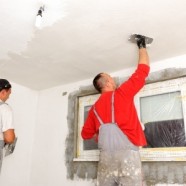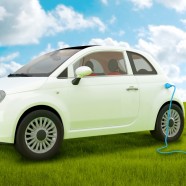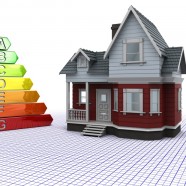Smart Homes: Safety and Security Options to Protect Your Family
Smart homes have been a major trend over the past few years, and the trend towards transforming our living spaces and bringing the internet of things into our homes won’t be going anywhere this year. In fact, there are some pretty amazing new electrical protection gizmos and gadgets that you can expect to see a lot more of this year, including:
- Facial recognition software. What used to be the preserve of spies and government agencies has gone mainstream, and new video surveillance technology for homes includes software that can recognize whether the person who entered your home is family or a stranger, and will tell you as much on your smartphone!
- There are also products on the market that can differentiate between humans, pets and other types of motion, which means fewer false alarms on your home security system.
- Smart garage doors are another trend this year, with products now available that allow you to retrofit your existing garage door opener to talk to you, also via your smart phone.
- Monitor, turn on, turn off and check in on appliances thanks to technologies from major manufacturers like LG, that let you check in on your gadgets from the office or the other side of the planet. Oh, and while you’re at it, consider switching your fridge for one that shows you what’s inside without having to open the door. Opening and closing refrigerators can waste a lot of power if you’re someone who can never find what they’re looking for!
- Voice recognition, fingerprint activated locks and wearables that tell you when someone has entered your home by vibrating are all security features that we are going to see more of this year and beyond.
- CO2 and gas alarms on your smart phone, as well as the alarm unit itself. Why wait to get home and discover a problem, when your home can let you know before there’s a major problem?
- There’s even a system that can detect leaks and mold in the walls of your home, using your existing wiring as a sensor network. Talk about safe and secure homes! Not even fungus gets past the new technologies!
- Baby monitors have gone high tech too, with wireless pan, tilt and zoom cameras replacing nanny cams and baby monitors, but if you do opt for this type of camera, make sure that you pay close attention to network security. After all, major online security companies have specifically identified cameras as a weak point for hackers.
- Finally, there are a range of products designed to make sleep safer, from crib units that alert you when a toddler has escaped, to beds that track kids’ sleep patterns.
There’s no denying that the smart home offers unparalleled levels of electrical protection this year, and whether you’re looking to go high tech or just upgrade your home security system a little, it’s a good idea to talk to an electrician in South Florida about your plans. They can help you decide what’s possible with your existing wiring, or what changes need to be made.
Read MoreNew Trends in Residential Lighting for 2016/2017
Every year, there are subtle shifts in décor and design trends, and lighting is no different. While redecorating your whole home isn’t really an option for most of us, the good news is that small changes can make a big impact. If you’re looking to update your residential lighting this year, there are some great trends you can try.
Artisanal Details
Artisanal décor details remain a strong trend in 2016, and lighting is a great way to bring this handmade look into your home. Consider hand crafted chandeliers or light fixtures. Think wrought iron, hand blown glass or other materials, and look for pieces that have the slight imperfections that make artisanal objects unique and original.
Gold and Brass
Warmer metals lost favor several years ago, and they’ve been mostly banished from stylish homes since then. This year, however, brass, copper and weathered gold have made a comeback, and they’re being seen on stylish light fixtures too. So if you want to bring some bling into your décor, consider opting for lighting fixtures in warmer tones.
Pared Down Industrial
It may seem strange that a year that features an emphasis on hand made décor and metals is also one that favors minimalist industrial design, but that’s exactly what is happening in residential lighting this year. Stainless steel fixtures with minimal frills, simple pendants and other minimalist styles are all going to be a big trend this year.
Bigger Is Better
Forget understated design this year. Lighting design this year is all about going big and bold. Think oversized chandeliers, giant sized sconces or large fixtures, and you have the trend in one. They work better in larger spaces, with higher ceilings, but a statement light can really transform a space, so consider one for your entrance area, dining room or living room.
Retro Feel
Finally, whether you’re planning new construction electrical while building a custom home this year, or looking to update your existing décor, there’s the retro trend. Fixtures and fittings that look like they belong in decades past are big news this year. Which also means that it’s a great year to trawl flea markets and antique stores for the genuine article at a bargain price!
Maritime Moments
If there’s one trend that shows up regularly, it’s the trend to maritime or nautical design elements, and 2016/2017 will be another year when we see beachy elements in design, including lighting. Whether you choose a ships lantern or a drift wood chandelier is up to you, but if you can bring the beach into your lighting design, you’ll be right on trend.
Like most years, décor in 2016/2017 will be a mixed bag of old and new, with plenty of ways to put your own stamp on your design. When you design your residential lighting this year, the best advice is to focus on what you like, and make the trends fit your style – not vice versa. Whatever you choose, remember that saving power and the environment will always be in style, so choosing LED or CFL friendly lighting options is always a good idea.
Read More5 Types of Electrical Remodeling to Consider
When you are renovating a home, chances are there are going to be some electrical remodeling tasks that you consider doing. Whether it is for energy savings, safety or aesthetics, you need to consider whether the things you are considering changing are a want or a need, and assign your remodeling budget accordingly. Here are some of the best electrical remodeling options you could choose.
-
A Bigger, Better Panel
If your remodel includes any additions or changes to your home that will require more outlets, fixtures or appliances, or place more load on your electrical, then you may find that your current panel is too small to accommodate the changes you want done. Or you may find that your panel is able to cope, but only just. If you have an electrician on site, and there is any chance that you are going to need a bigger panel, it is always better and cheaper to do it at the same time as other work on site.
-
Wired Smoke Alarms
Another great addition to your home renovation plan are hardwired smoke alarms. These are basically the same as your regular battery operated alarms, but instead of having batteries that you need to replace from time to time, they are hard wired into the electrical in your home. That means you will never forget to change the batteries, and you will always be monitoring your home.
-
Add Solar or a Backup Generator
When you have an electrical company on site for renovations, it’s a good time to add a solar power system or a backup generator. A solar panel system could allow you to be partially or totally off the grid for some or all of the year, while a generator can ensure that you have power during those Florida storms.
-
Upgrade Your Wiring
This one is not so much an option as a necessity if you have old wiring. Homes that have old wiring are susceptible to fire, and it is too much of a risk to keep it once you know it is there. This is definitely something you want to time to ensure that it happens while you’re in the middle of renovating a home, as it’s likely that drywall will need to come down to access all the wiring.
-
Add Outlets and Fixtures
If you are upgrading an older home, then it is likely that you do not have enough outlets in each of the rooms, and changes are you have lighting plans that require additional fixtures. These are exactly the kinds of electrical remodeling you should do while you are in the process of a larger renovation, to save time, effort and money.
Electrical is one of the hidden systems in your house that you hardly think about, but which works hard for you. With the savings in time and money that come from bundling your electrical remodeling with a renovation, it is certainly worth considering which kinds of electrical upgrades your home needs, and including them in your renovation plans.
Read More
Why a Whole Home Generator is Vital to Emergency Preparedness
Until you have experienced a blackout, you never really think about getting backup power. However, once you have, you know what to expect. Everything in our modern lives depends on power to work. Being without it, even for a few hours, can be a miserable or even downright dangerous proposition.
We take a look at why you should consider a backup generator, what your options are, and how you can go about getting the right home generator.
Who Should Have a Backup Generator?
Ideally, everyone would have a backup generator, because blackouts and power failures can happen anywhere, anytime, to anyone. However, while that is certainly true, there are a few people who need power more than anyone, including:
- Parents with young children, who need to sterilize or heat bottles or other items.
- Anyone with a medical condition who requires power for treatment.
- Elderly people who may injure themselves due to poor lighting.
- People who work from home and who need power to earn a living.
There are many other cases where power is a necessity, but I think we can all agree that even if it is not strictly necessary to our health and wellbeing, it is necessary for our comfort and happiness!
What Are Your Backup Generator Options?
When it comes to home generators, you have two basic options: a portable generator or a backup generator (also sometimes known as a whole home generator.)
Backup generators are generators that are wired into your home’s electrical system, so that when the power shuts down, they automatically take over. These types of generators can either power some of your appliances (ranging from the bare essential survival appliances to more extensive ranges), or they can be what is called a whole home generator. As the name suggests, this type of generator provides enough power to keep your whole home running.
Portable generators, as the name suggests, are built into a frame, which usually includes wheels, so that it can be moved around. This type of generator is not wired into your home, and you will need power cords and power bars to use your appliances, which makes it less convenient. On the plus side, however, these types of generators can accompany you on camping and fishing trips, so they are multifunctional.
How to Get a Generator
If you are considering buying a generator for your home, then the best way to get all the information you need is to talk to a residential electrical contractor. If you opt for a wired-in backup generator, they can advise you what size and type you need to meet your emergency power needs, and they can probably get you a better deal on a higher quality unit than you would get in a hardware store.
A backup generator is never a bad investment, and in places like Florida where there are frequent big storms, it is one you will probably find good use for sooner rather than later.
Read MoreHow Electrical Vehicles are Improving Green Efficiency
In 2011, Barack Obama set the goal of having 1 million electric vehicles on the road by the end of this year. It is now clear that while we won’t reach that goal, there have been significant strides in the electrical vehicles market. Although the industry hasn’t achieved its target of a million units, it has made great strides and we are improving not only the state of EV’s on the road, but also the ideals of electrical efficiency and green building in general.
The Silent Electrical Revolution
In spite of falling short of those goals, there are some good signs that there is a silent revolution going on in the automotive world:
- Of the 300,000 battery powered vehicles on the road today, nearly 120,000 were sold in 2014 alone. That means that the demand for plug-in powered cars is increasing, and that is a good sign. It means that people are realizing the value of alternative energy, and that is something we all need to do.
- Far from being boring and slow like they used to be, manufacturers like Tesla have finally managed to make electric cars sexy, and that means that the demand is growing.
- The market for hybrids has never been bigger, either, and nearly 230,000 units were sold in the USA in 2015 alone!
- There is already a demand for certain electric vehicles that are due to be available in 2016, including Chevrolet’s Volt and several Tesla models.
- Volatility in the oil market is likely to continue, which will make the search for viable alternatives ever more important.
- Improvements in batteries and electric motor efficiency are making the payback period for electric cars, and the lifecycle costs, a more attractive proposition for buyers.
These factors make it clear that while the growth in demand for electric cars has been slow it is gaining momentum, and battery-powered and plug-in cars are not going to disappear anytime soon.
What Are Electric Cars Doing for Electrical Efficiency?
It is wonderful that electric cars are finally becoming a genuine mainstream vehicle option in America, but you may be wondering what impact they are having on electrical efficiency in general, and green building in particular.
There are several ways that electric vehicles are impacting how we build homes and other structures. On the one hand, consumers are becoming better educated about options and more environmentally conscious, which means they are more open to alternative power, energy savings and efficient home strategies.
On the other hand, the improvements being made to batteries and motors in the automotive industry is also driving innovation and change in other industries, including electrical, electronics and HVAC, all of which means it’s only a matter of time before we have more options for efficient home building.
Whatever your feeling about green power and electric cars, however, it’s worth finding an electrical contractor in south Florida who can advise you on how to make your home more efficient. Not only will you be helping to reduce the impact on the environment, but you can also save a bundle on utility bills.
Read MoreHow to Make Your Home a High Performance Electrical Superstar
High performance homes are in big demand. People love to buy these types of homes, because they know that a certified high performance home will have the best heating and cooling efficiency, the best ventilation, and the best electrical efficiency. Many new homes are built to high performance standards from day one, but it is possible to retrofit too.
If you want to make your home a high performance superstar, there are a few steps you can take to make positive changes to your power consumption.
Get a RESNET Approved Contractor
The first step in transforming your home into a finely tuned electrical machine is to find a contractor who is RESNET approved. RESNET is the umbrella body that manages the HERS (Home Energy Rating System), and ensures that contractors who are performing HERS construction or upgrades are following best practices. There is a handy search function on their website, to help you find a contractor in your area.
Getting Your HERS Rating
Often, when working with an existing building, the first step in transforming your house into an energy efficient home is to get your HERS rating. This is a number, based on a variety of energy related factors, which indicates how energy efficient or otherwise your home is. It is a number that will either be above or below 100 (which is the benchmark for HERS ratings.)
If your home has a rating below 100, then that means it is more energy efficient than average, while ratings above 100 are less efficient.
Knowing where your home falls on the spectrum is important, so that your contractor can determine what changes need to be made to make your home as efficient as possible.
Improving Your HERS Rating
There are several things you can do in your existing home to make it more energy efficient, and to improve your HERS rating. Here are a few very simple changes that can make a big difference:
- Switch out appliances for energy efficient ones. If your appliances are older, chances are they are not as efficient as they could be, and you could save a considerable amount of energy by using newer, Energy Star rated ones instead.
- Upgrade lighting to be energy efficient. Switch out fixtures for LED or CFL friendly versions, and trade your regular garden lights for solar powered versions.
- Improve your insulation. Even though you probably do not need the heating benefits in Florida, you can cut your cooling bill considerably, including the power required to run your air conditioning units.
- Replace windows with energy efficient versions. These windows have an invisible film on them that prevent the entry of a percentage of solar rays into your home. Again, this can make your home cooler and save energy and money.
- Upgrade your water heater and fix dripping faucets. You may not think that plumbing upgrades would affect power consumption, but since heating water is a big chunk of your power bill, changes like this can improve your energy consumption and rating significantly.
There are many reasons to upgrade your home and improve its HERS rating. You can inspect and improve electrical protection at the same time, you will save power, and your home will be more energy efficient and less hard on the environment.
Read More






Recent Comments